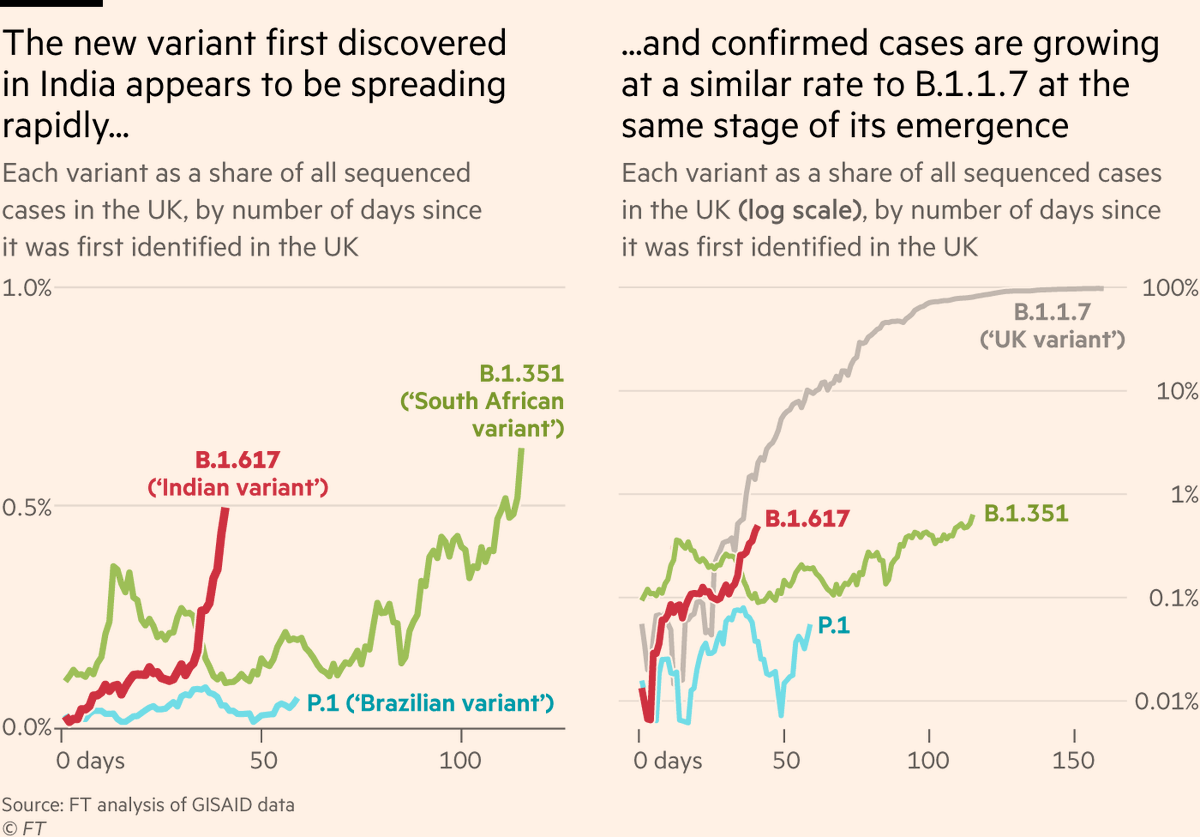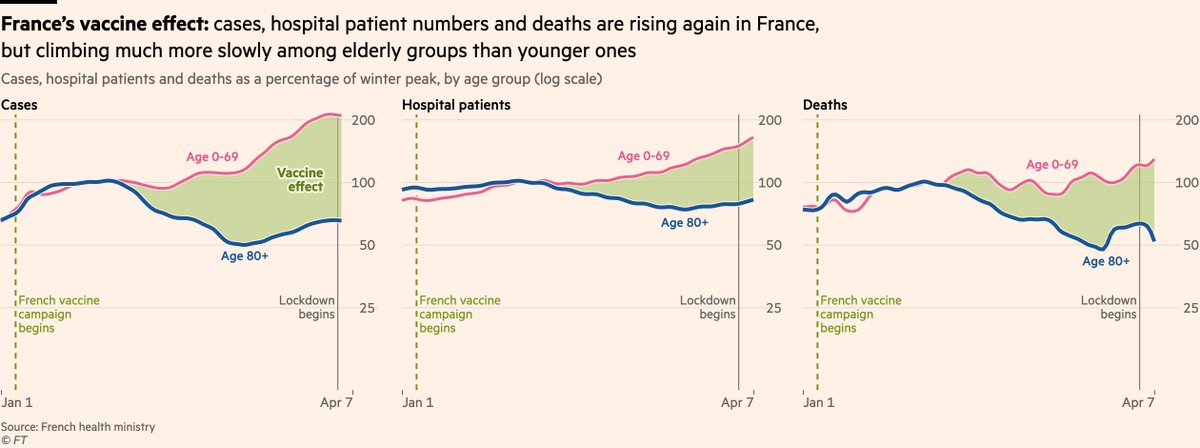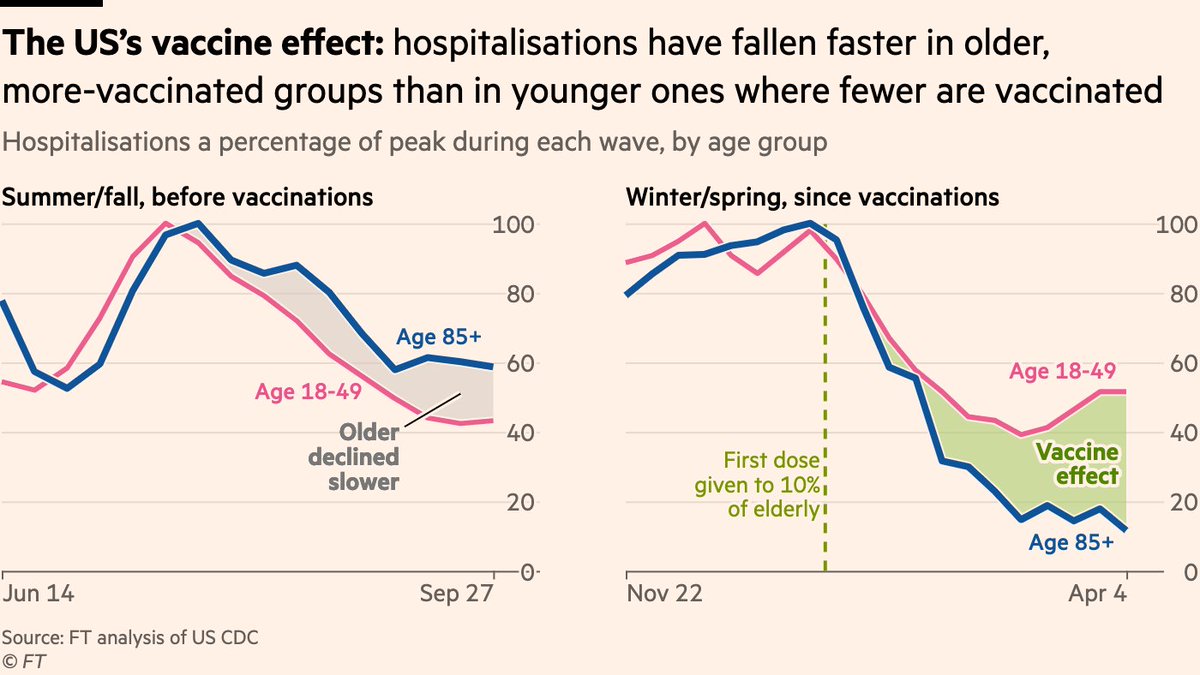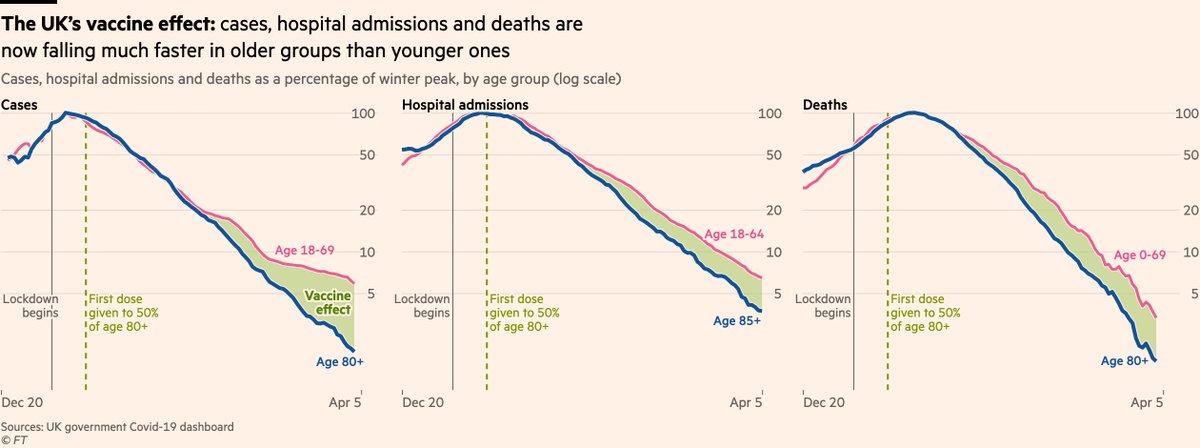
NEW: the variant thought to be responsible for fuelling India’s grim second wave (B.1.617) has been found in the UK, and numbers are rising relatively quickly in Britain.
Story from @AnnaSophieGross & @JasmineCC_95 ft.com/content/a55eb7…
Quick thread on caveats:
Story from @AnnaSophieGross & @JasmineCC_95 ft.com/content/a55eb7…
Quick thread on caveats:

1) Numbers are very small (<100 sequenced cases so far), which means random variation and patterns in testing can play an outsized role in driving the overall trajectory.
We can see this with the Brazilian and South African variants, whose trends are anything but established.
We can see this with the Brazilian and South African variants, whose trends are anything but established.
2) We have vaccines now, so key question is not just "is B.1.617 spreading fast?", it’s also "do the vaccines work as well on B.1.617 as they do on B.1.1.7?"
We don’t know the answer to that yet, but with vaccinations rolling out in India, I suspect we’ll start to find out soon.
We don’t know the answer to that yet, but with vaccinations rolling out in India, I suspect we’ll start to find out soon.
We don’t have sufficient evidence right now to say B.1.617 will continue its growth trend, and whether or not it does we don’t know whether it will set back the progress we’ve made on vaccinations.
So for me, this goes in the "one to keep a very close eye on" bracket.
So for me, this goes in the "one to keep a very close eye on" bracket.
An aside: there’s a lot of noise about variants in the UK at the moment. It’s good to be wary and to keep a very close eye on things, but some of what I’ve seen has crossed the line into alarmism.
The alarmist stuff is generally not giving people any information they can use, but is fanning fear among the already extremely anxious.
The numbers we‘re talking about here are tiny. Sometimes 2 or 3 confirmed cases in a week. That means huge uncertainty around trends, so we should be very careful about using words like "surge".
/ends/
/ends/
• • •
Missing some Tweet in this thread? You can try to
force a refresh












